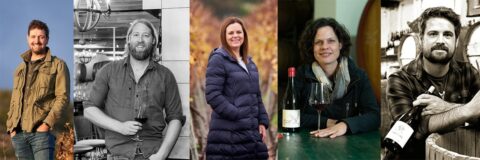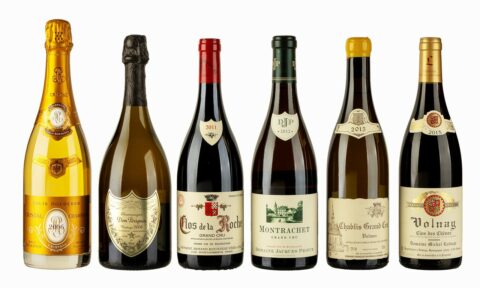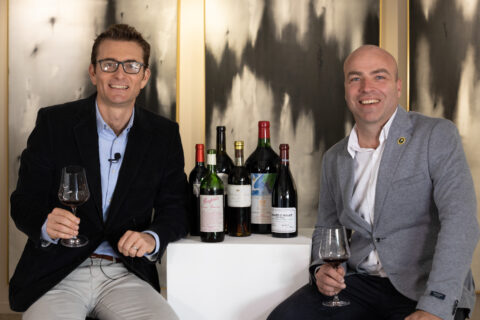Financial Mail Travel
Bubbling Up
The veranda at Franschhoek Pass Winery is cluttered with mics, wires and other music gear this morning. The vines just beyond are like rows of an auditorium except the view is an emerald patchwork of farmland cradled by mountains on all sides.
“It’s just band practice,” says wine farmer and part-time rocker Nick Davies, when I ask if he serenades the grapes.
The winery is one of Franschhoek’s few specialist makers of MCC (Méthode Cap Classique) sparkling wine and among two dozen on a dedicated tourism route that promotes the style in the region.
The Davies’ cellar was referred to me as a must-see, and is easily mistaken for being “old world”. Thick-walled alcoves are filled with neatly stacked bottles of Morena MCC; some of the corks are tied with string, a technique used before the invention of the museletwire cage. Above us, ornate steelwork lamps provide dim light.
For Davies, the valley’s image galvanised with the establishment of a dedicated bubbly festival over a decade ago, a move that spurred its reputation for MCC.
The first seeds, however, were planted by Davies’ neighbours at Haute Cabrière. As I drive back to town, a team works feverishly on upgrades to the winery’s outside seating area. Pioneer Achim von Arnim isn’t around today, but his wife Hildegard tells how he’d been inspired by SA’s first MCC made at Simonsig. At the time, von Arnim worked at Boschendal where he produced the first successful harvest in 1978.
“Fate intervened encouragingly,” says Hildegard, “when Jean-Louis Denois – a young Frenchman on holiday from the Champagne region – knocked on the cellar door at Boschendal during the harvest of 1980 looking for work.”
Denois moved in with the von Arnim family for three or four months and he greatly encouraged the experiments that resulted in the first Boschendal Brut.
In December 1981, von Arnim discovered that a nearby farm, Clos Cabrière, was on the market and he snapped it up. On the 15-hectare property, he planted Chardonnay and Pinot Noir – two main varieties in the Champagne region. Boschendal was fine with this move because at that stage it was a small development in a valley not known for its wines.
The first MCC von Arnim produced on his farm came in 1986, named after the founding owner of 1694, French Huguenot Pierre Jourdan. At the time, another major development was taking shape in the village. Arthur and Adre McWilliam Smit had bought a restaurant and renamed it Le Quartier Français, which is where the foundations were laid for Franschhoek’s reputation as the Cape’s “gourmet capital”.
Von Arnim also played a key role in establishing the wine route with advertising man-turned-wine farmer Michael Trull. Called the Vignerons de Franschhoek, it was founded in 1980. Key supporters included Boschendal (under Anglo American at the time) and the Ruperts of L’Ormarins and La Motte.
“The town should erect a statue to Achim,” says Paul Gerber, former winemaker at Le Lude and now with Colmant, SA’s first winery set up exclusively for the making of MCC, “for his contribution to MCC, but also his spirit of generosity.”
Colmant’s bubbly is among the most awarded at South Africa’s annual Cap Classique Challenge, held since 2002.
Whether it was MCC or just the beauty of the valley previously named Olifantshoek (after the elephants that once grazed there), international attention has since ballooned, thanks to investment by the likes of Virgin’s Richard Branson and Indian businessman Analjit Singh.
Pieter “Bubbles” Ferreira – an MCC legend who marks his 30th anniversary at Graham Beck this year – lives in Franschhoek too. He was all set for retirement next year, but “Pieter without a bubbly project on retirement was never going to be an option,” says his wife, Ann. He set the wheels for his personal label in motion in 2011 and released the first vintage of Pieter Ferreira Cap Classique this year. It is 100% Chardonnay, a Blanc de Blancs 2012, made from a selection of fruit from the Robertson and Darling regions. Only one small problem: Graham Beck changed its policy, so Pieter’s staying put for another five years.
I stop at Le Lude, another of Franschhoek’s top producers, where the elegance of its flutes and bubbles is reflected in the high-ceilinged tasting room and Parisian décor. The tone is muted; French accordion music plays over the speakers. There’s a glass floor panel looking into a cellar below. Post-tasting, I stroll through its small rose-garden, the flowers magnificently bejewelled by beads of water from the morning’s light rain.
Part of the joy of a visit to the valley I find is the ease of access along the well signposted single main road. I pass a group of cyclists – tourists with a guide – and there are more eco-bikes parked outside when I arrive at Leopard’s Leap. When I sign in, the gate guard cautions me with a big smile “be careful with that wine. Often the man drives in, but it’s the lady who drives out!”
The experience at Leopard’s Leap is as welcoming as they come: a large visitor centre dedicated to food and wine – and it’s family-friendly. I’ve booked for the South African Table: a themed food-and-wine lunch that allows foodies to follow the kitchen activity on overhead cameras. Over lunch, chef Pieter de Jager shares his biggest delight of the town: to be able to walk and buy a croissant in the morning. “It’s in the country; and there’s exciting food; and it’s beautiful,” he declares.
The meal makes a useful loop back to the town’s food heritage. This is the home of Foliage, Protégé restaurant, Le Coin Français, La Petite Colombe, and Chef’s Warehouse at Maison with culinary heavyweights, like Chris Erasmus,Darren Badenhorst, Scot Kirton and Liam Tomlin, all invested. New on the scene is Fritz Schoon’s bakery café, the Hey Joe Brewery, and Leeu Estates’ Le Chêne restaurant.
But it’s not all about food and wine. On the art front, Franschhoek is awash with wonderful collections. Many are in private hands and go on display occasionally as part of the town’s dedicated art route. The most prominent can be seen at wine estates such as Holden Manz, Leeu, Grande Provence and La Motte. The latter celebrates its 50th anniversary under Rupert family ownership next year. It’s here that I take coffee under large oak trees and then browse the works of JH Pierneef – the largest private collection on display, now adjoined with a temporary exhibition of work by MJ Lourens. Among its other attractions, the farm hosts classical music performances and historic walks.
Later, I set off for another historic winery. There’s generally a rush on Dieu Donné for sundowners, 30 minutes before closing. This afternoon, the sun is warm and a cool breeze strokes the leaves of the vines nearby. The day is done; little else is possible except to reflect and drift away. There’s a familiar pop of cork at another table and Nick Davies’ musings on MCC return. Bubbly is a shared experience, whether from the bottle or the joy that’s to be had simply from hearing that familiar celebratory sound.
Five stellar bubbly producers:
Boschendal
Book a tasting at one of the most celebrated wine estates in the country – and the original home of Mzansi-produced MCC. The estate also offers exceptional restaurants, including the gracious Die Werf overlooking the farm’s own edible garden. You can book picnics, spend a night or two in one of the glam cottages, and explore the estate by bike or on foot. Plus, there are cellar tours, so you can see what 300 years of heritage looks like, horseback rides, a spa, and The Tree House, an educational, activity-based centre for children. boschendal.com
Plaisir de Merle
Originally known as Le Plessis Marly, after the hometown of founder Charles Marais who fled France in 1687, the modern name means “Pleasure of the Blackbird”. Marais, as it turns out was one of a few French settlers in the Cape who knew about winemaking, so the tradition at this estate in Simondium is strong. Since 1993, winemaker Niel Bester has been making the most of the estate’s diverse terroir; his classic French-style Grand Brut MCC is a blend of Pinot Noir and Chardonnay, fermented in the bottle for around 24 months. plaisirdemerle.co.za
Dieu Donné
You can get there without too much effort by hopping aboard the Valley’s wine tram – it’ll take you to this historic estate (once called Uitkyk) on the steep southwest-facing slopes of the Franschhoek Mountains. Here, the cool climate combines with the rocky soils of weathered granite to create a unique terroir. Winemaker Gregory Siebrits uses the resulting grapes to produce two gorgeous bubblies – a Brut Rosé (2017) and an MCC Blanc de Blancs (2016). dieudonnevineyards.com
Pongrácz
The grapes come from the coastal region – winemaker Elunda Basson uses only the best hand-selected Pinot Noir and Chardonnay grapes to produce one of the country’s most distinctive and adored MCCs. Latest in the range is the Pongrácz Noble Nectar, a medium-sweet bubbly that pays homage to a style of sweeter Champagne that was popular among aristocrats in the 19th century. It comes in a beautiful purple-hued bottle that will light up hearts this festive season. pongracz.co.za
Tanzanite Wines
Devoted to creating a uniquely South African MCC, Melanie van der Merwe has been making wine since 1995. For most of those years, she has specialised in bubbly and spent several vintages working on prestigious estates in the Champagne region, honing her craft. You can taste the skill – and the passion – in her Brut and Brut Rosé, produced from Chardonnay and Pinot Noir grapes grown primarily in the Robertson Valley. tanzanitewines.co.za






 Sign-up and receive the Business Media MAGS newsletter OR SA Mining newsletter straight to your inbox.
Sign-up and receive the Business Media MAGS newsletter OR SA Mining newsletter straight to your inbox.